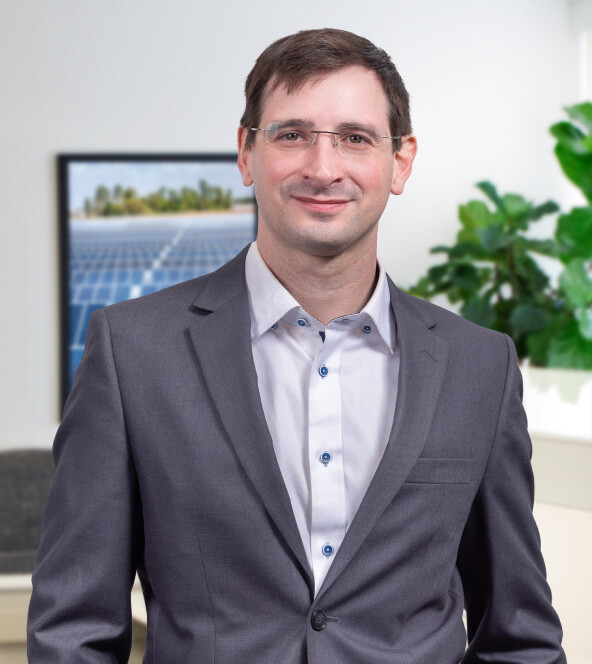Landowners
At Inman Solar, we understand the value of your land and the connection to the local area. Leasing land for solar introduces a new era of land stewardship with a low-impact, fixed income “energy crop.” Solar energy, as generated through our projects, provides a unique buffer against inflating property taxes and fluctuations in commodity prices. With Inman Solar, you can secure steady income while simplifying land management and ensuring the longevity of your cherished family property. Solar is non-permanent and does not alter the characteristics of the land, so it is an ideal way to preserve your property while providing an alternative income source.
Frequently Asked Questions
General Solar Questions
Like other types of farms, a solar farm produces a product that people need. In this case, rows of solar panels produce electricity, which powers places like homes, businesses, schools, and hospitals through the electrical grid. The solar panels are mounted on racking with smart solar trackers that rotate slowly throughout the day, following the sun to maximize solar energy production. These trackers also protect the panels from hailstorms and prevent snow buildup. The land beneath and around the panels is planted with specially selected flowers and grasses to benefit the local environment.
Solar farms play a crucial role in diversifying our country’s energy mix, adding resilience and security to our energy infrastructure, reducing our dependence on foreign energy sources, and lowering electricity costs. They generate clean, renewable energy with no polluting emissions, contributing to healthier air and a sustainable future for everyone.
Land Use & Soil Protection
The ground under a solar farm is predominantly covered with vegetation. Solar panels are mounted on racking that occupies less than 10% of the land. The space between rows of solar panels, in addition to buffer areas, is planted with site-specific grasses and other vegetation to enhance net biodiversity over the first five years of operation.
Solar panels are installed on racking with smart solar trackers that follow the sun. They rotate slowly from east to west during the day, with a height ranging from 4 to 10 feet, similar to a field of corn.
Solar equipment operates more efficiently in cold weather, and solar farms are designed to prevent snow buildup on panels. Smart trackers protect panels from hailstorms, and their slow rotation maximizes solar energy production.
Photovoltaic solar energy projects have a lifecycle emissions footprint 95% lower than coal-fired power plants, significantly reducing greenhouse gas emissions.
Solar projects collectively help decarbonize our country’s electric grid, lower electricity costs, and enhance our nation’s energy independence and security. As more solar energy enters the grid, overall carbon footprints reduce, and electricity becomes more affordable for everyone.
Solar farms protect land from permanent industrialization and urbanization. They help reduce the carbon footprint and preserve farmland for agriculture.
Farmland is ideal for solar projects, as it is previously disturbed land, offers long-term protection, generates revenue for landowners, and contributes to the economics of farming.
Solar farms implement best practices to manage stormwater, including early seeding, vegetation plans for erosion control, and adherence to local regulations.
Solar projects aim to increase local biodiversity and provide habitats for local bird species. Studies show an increase in bird species and abundance at solar farms.
Leasing Land for Solar
If you’re interested in partnering on a solar project where you own the land, you can get in touch with us by filling out a contact form on our website. We’ll sit down with you to understand your goals, your land’s potential for “solar as a crop,” and consider the needs of the surrounding community and environment.
Health & Safety
Solar panels are securely laminated, sealed within tempered glass, and subject to rigorous testing to ensure no hazardous materials are released, even if the panels are damaged.
We are committed to recycling solar panels on all our solar farms, partnering with environmentally responsible recycling facilities vetted by the Solar Energy Industry Association (SEIA).
Over 80% of a typical PV solar panel consists of easily recyclable materials. The Solar Energy Industries Association (SEIA) oversees a national solar panel recycling program to ensure responsible recycling.
EMF from solar is no more impactful than that from home appliances, and there is no detectable EMF generated by solar panels themselves.
Sound at the solar project is limited to inverters and transformers, which are inaudible beyond the project boundaries. Our projects adhere to local noise regulations.
Studies show that any heat generated by solar farms is minimal and dissipates quickly, with no measurable impact beyond the project boundaries. Solar projects often include ground cover, providing a cooling effect.
Solar panels are designed to absorb sunlight, not reflect it. A study may be conducted to ensure there is no interference with aircraft, as required by the FAA.
Solar farms are designed to require minimal water, with cleaning rarely necessary during operations.
Property Values
Analyses across the country have shown that solar farms have no measurable impact on the value of adjacent properties and, in some cases, may have positive effects.
Decommissioning
A full decommissioning plan is submitted for each solar project. This plan ensures the dismantling, removal, and recycling of the project components at the end of its life, allowing the land to return to agricultural activities or another use.
